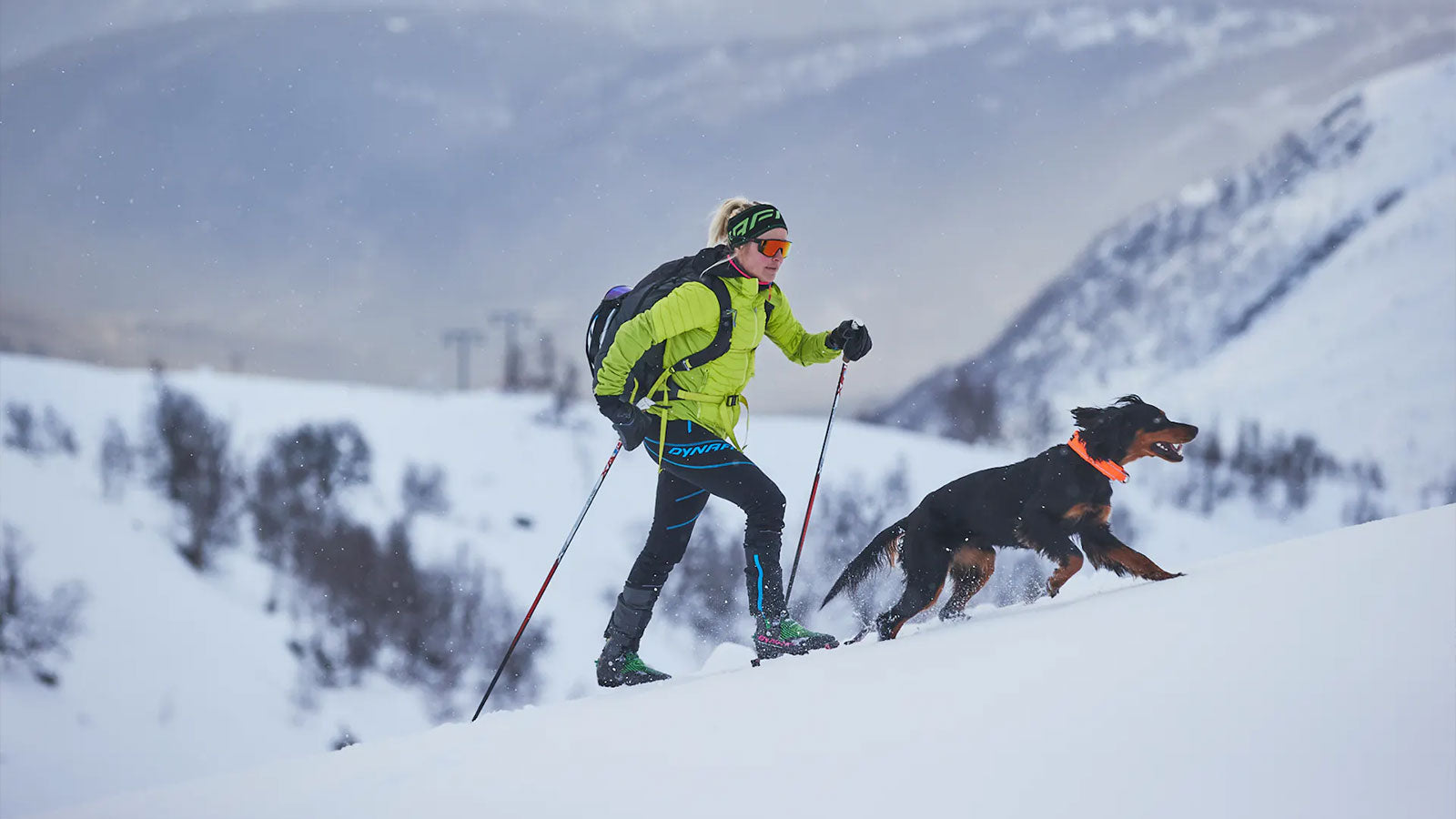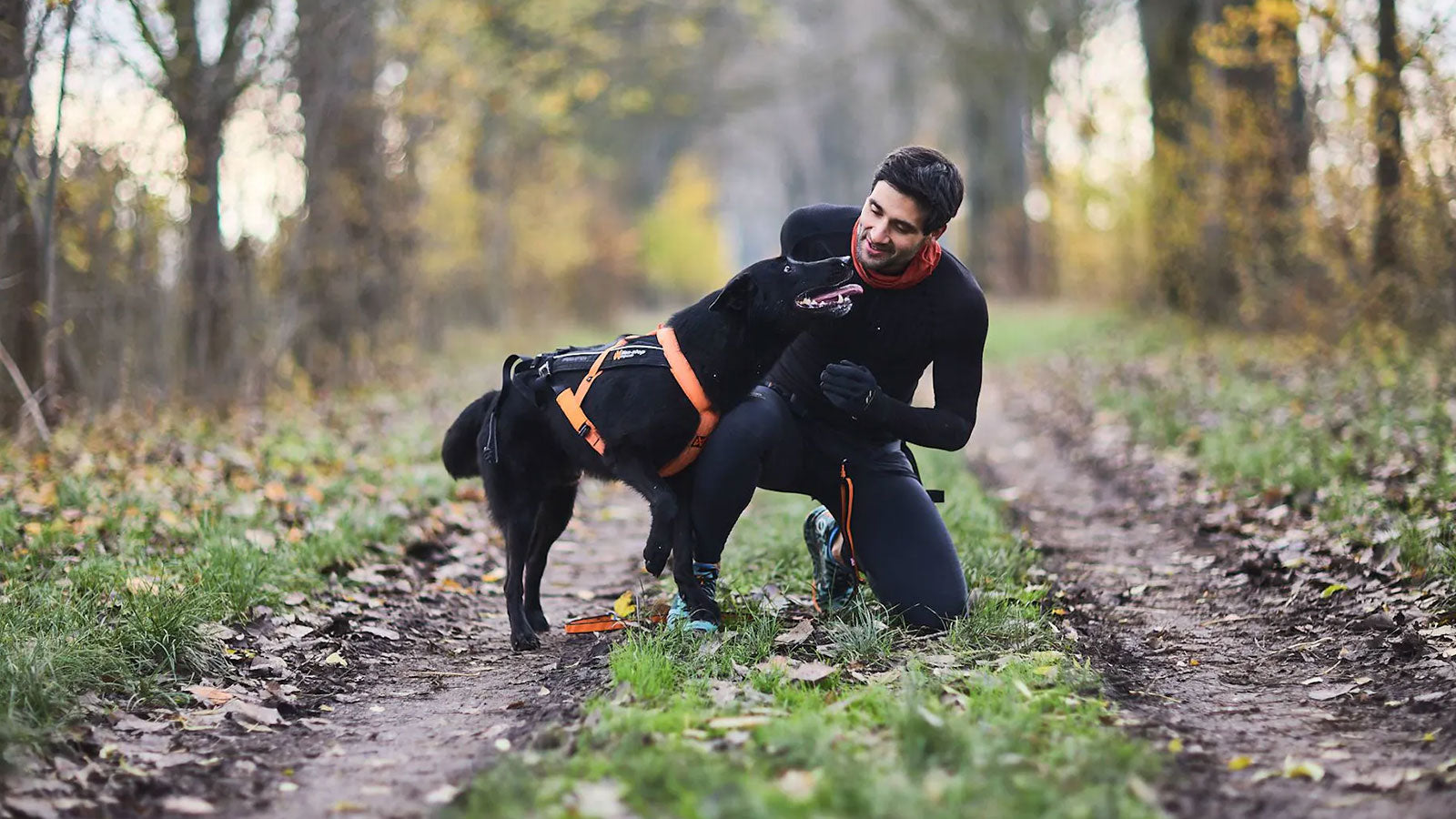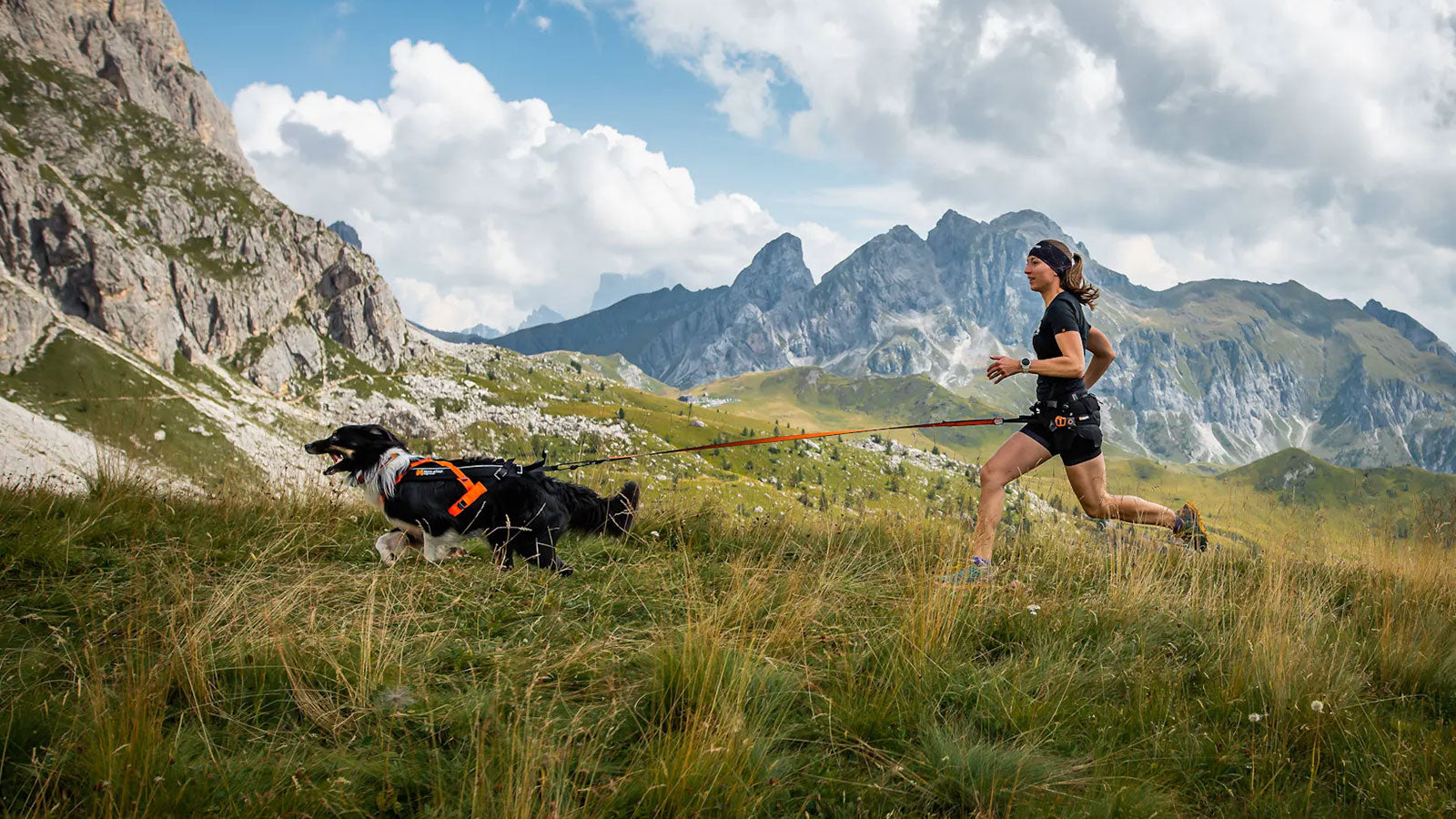Backpacking with your dog can be a rewarding experience when done properly. Using a backpack like the Amundsen pack can help build your dog's strength and endurance while ensuring their safety and comfort.
Key considerations include the dog's age and physical condition, correct fitting and adjustment of the backpack, weight limits, and essential gear. Proper planning and packing are crucial for a successful and enjoyable hike with your canine companion.
Key tips for backpacking with your dog
- Start gradually: introduce the backpack to your dog at around two years old, starting with an empty pack and slowly increasing the weight as your dog gets used to it.
- Proper fit and adjustment: ensure the backpack is the right size and adjusted correctly. Use the size chart and check that all straps are secure but not too tight, allowing for proper movement and breathability.
- Weight limits: do not exceed 5-15% of your dog's body weight for occasional carrying. For well-trained dogs, a maximum of 30-50% may be appropriate, depending on breed and fitness.
- Plan your hike: choose your hiking area carefully, considering terrain and weather. Bring booties to protect your dog's paws and ensure you have enough water and high-energy food for your dog.
- Essential gear: equip your dog with necessary items like booties, a collar, an elastic leash, a sleeping bag, and weather-appropriate clothing such as a raincoat or a warm jacket.
How old can the dog be to carry a backpack?
When your dog is two years old and the body is fully grown, you can start getting your dog used to the backpack. Bigger breeds may have to wait a little longer. Start with an empty backpack and let your dog get to know it. Then, you can gradually increase the weight.
It is important that your dog is in good physical shape before going on longer hikes. As your dog gets more accustomed to the backpack, and the weight has gradually increased, you can start to use a heavier load on shorter hikes. Then, gradually increase the length of your hikes.
While your dog is getting used to the backpack, take the time to find the right adjustments for it.
How to find the right size and how to adjust the backpack?
To find the right size, we recommend looking at the size chart. The measurements on the Amundsen pack go from elbow to elbow, over the dog's back.
All adjustments and tightening straps are on top of the backpack. The strap in front should be tight to avoid movement in the backpack. The strap in the back should be adjusted in a way that allows you to fit two fingers between the strap and the dog's chest. This ensures that the dog's chest can expand. If you are going downhill for a long time, you can tighten the back strap to prevent the backpack from moving forward.
If you have the right adjustments around the neck, you should be able to fit two fingers between the neck and the backpack. The backpack should stop at the dog's elbow or 2 centimeters above.
How much weight can my dog carry?
The amount of weight a dog can carry depends on the breed, size, and physical condition. For a healthy dog in regular shape that only carries weight occasionally, a maximum of 5-15% of the dog's body weight is recommended. As the dog becomes more accustomed to the weight, you can gradually increase it to the realistic hiking weight. A strong and well-trained dog can carry 30-50% of its own body weight, depending on the dog's shape and breed. Additionally, the weight of the backpack will vary based on the terrain and the length of the hike.
Plan your hike
If you are planning a longer hike during the summer and want your dog to carry a backpack, it is recommended to get your dog used to the backpack a few months in advance.
Consider the terrain where you will be hiking. Some areas may have higher requirements than others. If you are hiking in a rocky area, your dog might tire more quickly, and its paws could become worn. It is recommended to bring booties to protect the paws. Stop frequently to check the paws. It is better to put on booties too early than too late. A dog with sore paws may cause you to end your hike earlier than planned.
Temperature is also an important factor to consider. Remember that your dog will use more energy and tire faster when carrying a backpack. Pay attention to your dog on warmer summer days, and ensure there is water nearby where you are hiking. If you are unsure, bring an extra bottle of water and a collapsible bowl for your dog.
Just like humans, dogs need nutrition when hiking. If you are going on a day trip or will be out for several days, remember to bring enough food for your dog. They will need more food than on a calm day at home. High-energy canned food is recommended as it provides necessary nutrition, is long-lasting, and easy to open. For longer expeditions, freeze-dried food is recommended as it is lightweight and lasts long.

How to pack the backpack?
First, ensure that the backpack is evenly weighted on both sides. A helpful tip is to place the backpack on your thigh (or arm if you have a smaller size) to feel if the sides are balanced. Use the first few minutes of the hike to observe how the backpack moves. You may need to make adjustments. If the backpack leans to one side, you can place small rocks in one of the top pockets to balance the weight.
Packing a backpack for dogs is similar to packing your own backpack. Place heavier equipment towards the front and lower in the backpack, as dogs are stronger in the front. Avoid placing hard or pointed objects against the dog's body. It is also recommended to place items you want to keep dry in bags. If your dog gets warm, it may lie down in water to cool off. Your dog can carry its own food, and you can create portioned bags with dry food or freeze-dried tripe to make packing easier and ensure the weight is distributed evenly. Carry any objects you do not want to lose or break in your own backpack.
Once the backpack is packed and adjusted, tighten the two straps on top to lift the bags and prevent them from rubbing against the dog's elbows and upper arms.
What hiking equipment does my dog need?
In addition to the backpack, it is recommended to have a collar. This allows you to switch between letting your dog pull uphill and attaching them to the collar to walk behind you downhill. If your dog pulls a lot, it can strain your body when walking downhill, so teaching your dog to walk behind you on downhills can be beneficial.
To reduce strain, use an elastic leash, such as the Touring Bungee, for hiking. Wearing a belt, like the Ferd belt, allows for hands-free walking. If you are hiking with a large backpack, you may want to attach the leash to your backpack.
Booties and paw care products are also recommended to protect your dog's paws. Consider the terrain when choosing booties. For hiking on various terrains, the Protector light socks are recommended, while the Protector booties are ideal for rocky terrain, and the Long distance booties are best for winter conditions.
For resting, we recommend the Ly sleeping bag, which will keep your dog warm and comfortable, ensuring they are well-rested for the next leg of your hike. If your dog has less fur, consider bringing a Blest jacket made with Primaloft, which is lightweight and keeps your dog warm. If rain is forecasted, a Fjord raincoat is recommended to keep your dog dry during breaks.
Recommended equipment for hiking with your dog:
- Amundsen pack
- Ferd belt
- Touring bungee
- Protector light socks / Protector bootie / Long distance bootie
- Paw care
- Ly sleeping bag
- Blest jacket
- Fjord raincoat
- Trekking bowl






Κοινοποίηση:
How to get started with Canicross
Guide to Skijoring with dogs - The best tips from professional athletes